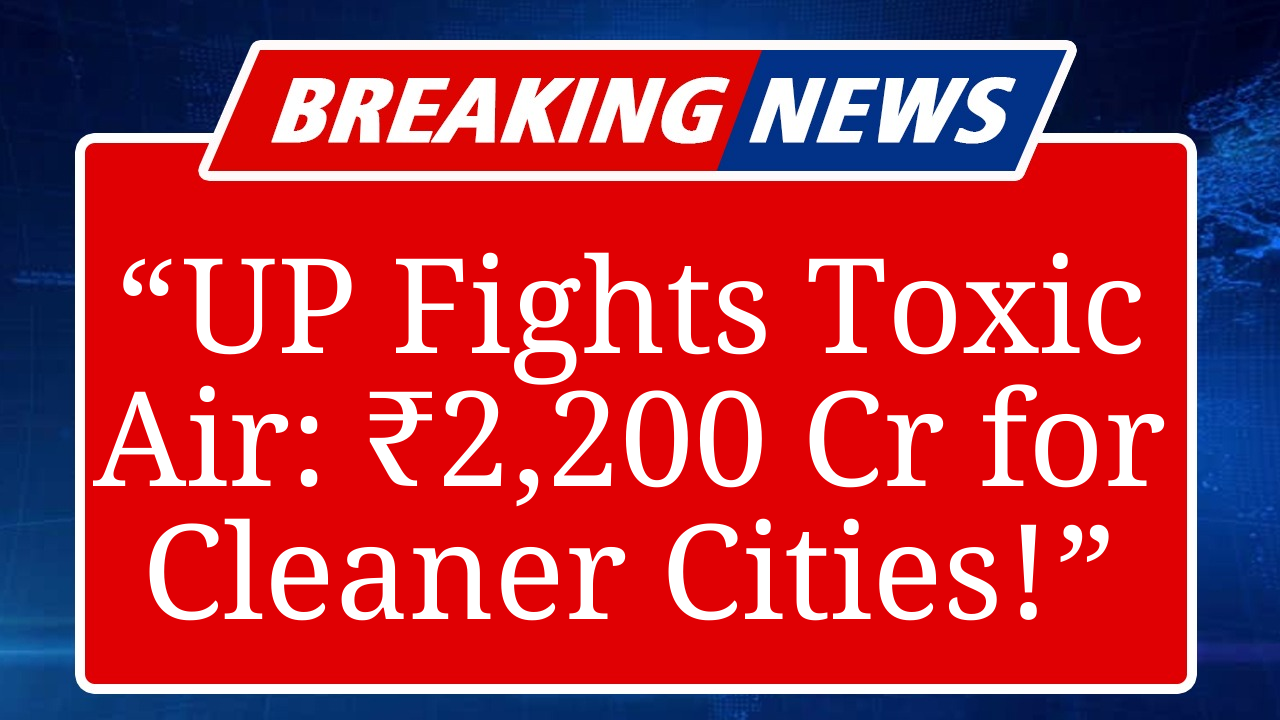UP’s fight against air pollution intensifies with dedicated funds for cleaner cities, targeting a 15% annual reduction in PM2.5 levels. The state’s million-plus cities receive ₹2,200 crore to enhance urban air quality through improved waste management, green transport, and infrastructure upgrades. Despite progress, challenges like underutilization of funds and inter-sector coordination persist, raising concerns about meeting clean air goals.
Uttar Pradesh’s Push for Cleaner Urban Air
In a significant move to tackle air pollution, the Uttar Pradesh government is leveraging central funds to improve air quality in its million-plus cities. As part of the National Clean Air Programme (NCAP) and the 15th Finance Commission’s recommendations, the state has received ₹2,200 crore as the first instalment of a ₹4,400 crore allocation for 2020-21 to address air pollution in urban agglomerations. This funding, aimed at achieving a 15% annual reduction in PM2.5 levels, is a critical step toward meeting India’s clean air targets by 2026.
The funds are directed toward 42 urban agglomerations, including cities like Kanpur, Lucknow, and Varanasi, which rank among India’s most polluted. Kanpur, in particular, topped the World Health Organization’s 2018 list of the world’s most polluted cities with a PM2.5 annual average of 173 micrograms per cubic metre, far exceeding WHO’s guideline of 15 µg/m³. The state’s air quality crisis is driven by vehicular emissions, industrial activities, crop burning, and household use of polluting fuels like wood and coal.
Key initiatives under this funding include strengthening municipal infrastructure for waste management, controlling construction dust, and promoting sustainable transport. For instance, Lucknow is expanding its electric bus fleet, with 100 new electric buses introduced in 2024, reducing reliance on diesel vehicles. Varanasi has implemented stricter dust control measures at construction sites, fining violators ₹5 lakh in 2025 alone. Additionally, the state is investing in green spaces, with Kanpur’s Green City 2030 project aiming to increase tree cover by 20% to combat particulate matter.
However, challenges remain. Government data from June 2025 reveals that Uttar Pradesh utilized only ₹30.57 crore of the ₹77 crore allocated under NCAP between 2019 and 2022, raising concerns about fund underutilization. Experts highlight that while municipal-level interventions are crucial, sectors like industry and power plants, which contribute significantly to PM2.5, require equal attention. The lack of alignment between NCAP and urban local body (ULB) funding further complicates coordinated action.
The airshed approach, emphasized by the World Bank, is critical for UP, where over 50% of PM2.5 pollution is secondary, formed from gaseous emissions like ammonia and sulfur dioxide crossing city boundaries. The Commission of Air Quality Management in the National Capital Region, established in 2021, serves as a model for regional coordination, but UP’s implementation lags. For instance, crop residue burning in rural areas around Lucknow contributes 20% to the city’s PM2.5 levels, yet funding for alternative agricultural practices remains limited.
Public awareness campaigns are also gaining traction. In 2024, Varanasi launched the “Breathe Varanasi” initiative, educating residents on the health risks of indoor cooking with biomass, which accounts for 30% of household air pollution deaths in the state. The campaign, supported by the Clean Air Fund, has reached 50,000 households, promoting cleaner cooking fuels like LPG.
Despite these efforts, experts warn that without robust performance metrics and inter-sectoral coordination, UP’s clean air goals may fall short. The state’s air pollution crisis, linked to 2 million annual deaths nationwide, demands urgent, scalable action. With only 71% of the ₹12,636 crore allocated under NCAP utilized across 130 Indian cities as of May 2025, UP’s challenge mirrors a national issue of inefficient fund deployment.
Disclaimer: This article is based on recent news, government reports, and data from sources like the World Health Organization, Clean Air Fund, and The Hindu. Information is accurate as of September 2025, but air quality data and fund utilization figures may change. Readers are advised to verify details through official government portals.

